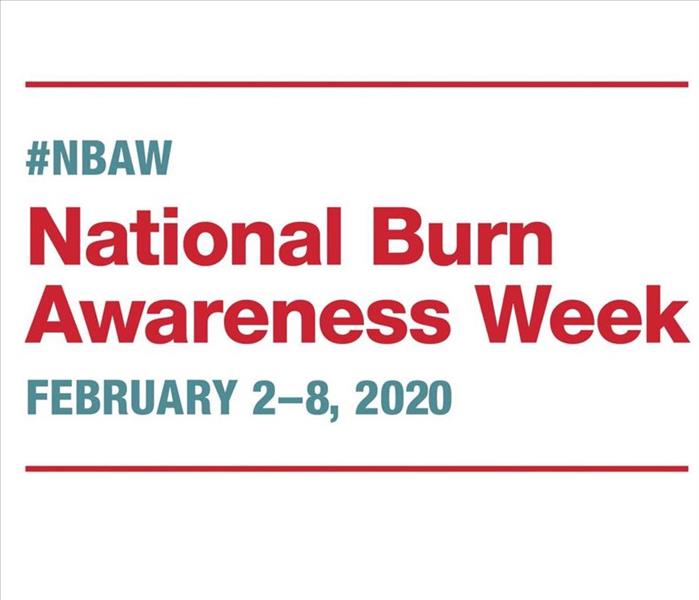National Burn Awareness Week -Treating First Degree Burns
2/7/2020 (Permalink)
In Observation of National Burn Awareness Week, SERVPRO of Shrewsbury/ Westborough would like to share the following information Regarding First-Degree Burn First Aid
The American Burn Association’s Burn Prevention Committee recommends the following guidelines for the treatment of minor burns. Please note that even a small burn, may have the potential to become infected. It is always advisable to seek medical attention as soon as possible. Remember, when in doubt or if you think the individual’s life is in danger, call 911.
What’s a First-Degree Burn?
First-Degree Burns are burns which involve the outer most layer of skin and are usually associated with a sun burn. Such an injury may occur from too much exposure to the sun (gardening, sunbathing, etc.). The skin is usually still intact, but may appear to be red, very warm or hot to touch and painful. There may also be small blisters, and swelling in and around the area of injury.
Initial first-aid treatment for a first-degree burn include the following:
DO’s
- Stop the burning process: cool the burn with running cool (not cold) water for at least 5 minutes. But do not use ice, as this may cause further skin damage. Do not over cool! If the victim starts to shiver, stop the cooling process.
- Remove all jewelry, watches, rings and clothing around the burned area as soon as possible.
- Administer an over-the-counter pain reliever such as ibuprofen or acetaminophen for pain control. Follow the directions on the label. Consult a physician or health care provider if pain is not relieved.
- Cover the burn with a sterile gauge bandage or clean cloth. Wrap the burned area loosely to avoid putting too much pressure on the burn tissue.
- Minor burns will usually heal without further treatment.
- For small area burns, apply soothing lotions that contains aloe vera to the burned area to help relieve the pain and discomfort.
- Seek medical attention if there is a persistent fever not relieved by medication or redness that may extend beyond the border of the burn or pain is not controlled by ibuprofen or acetaminophen.
- Drink plenty of fluids (electrolyte containing solutions such as gator aid) if the person appears to be dehydrated.
DON’TS
- Do not apply ice – this may cause further damage to the skin.
- Do not use any butter, ointments or other home remedies on the burn. Such substances may trap the heat in the tissue and makes the burn worse.
- Do not break any blisters…leave intact.
- Do not delay seeing medical attention if the burn is larger than the size of the victim’s palm.
Healing
It may take several days for a mild first-degree or second-degree burn to heal. During that time, it is important that the affected area is observed for infection, such as redness extending beyond the burned area, changes in the appearance of the wound or slight fever not relieved by Tylenol. As your skin begins to heal, you may also notice that it will itch, which can be very uncomfortable at times. This is normal and will eventually decrease. Frequent application of lotion can help keep the skin hydrated and minimize the itching process. If the itching is too severe, an over-the-counter medication such as Benadryl® may be helpful in easing the discomfort. Remember...always follow the directions on the label. The wound should be kept clean with daily dressing changes. If you have any concern or questions, consult your healthcare provider. Once the burn has healed, limit the exposure of the burn skin to direct sunlight. Always wear sun protection.
Following the above guidelines should promote healing to most minor burns.
**This material is for information purposes only. It is not a substitute for professional medical advice, diagnosis, or treatment, which you should seek from your physician. The ABA does not endorse any specific product, service or treatment.
To learn more about Burn Treatment and Prevention please visit: http://ameriburn.org/prevention/prevention-resources/#1493037731300-e4bd5ba9-3769





 24/7 Emergency Service
24/7 Emergency Service
